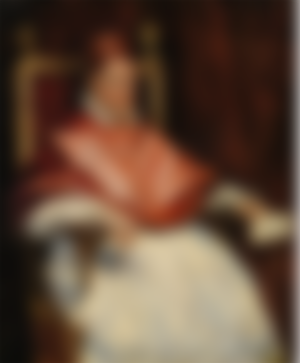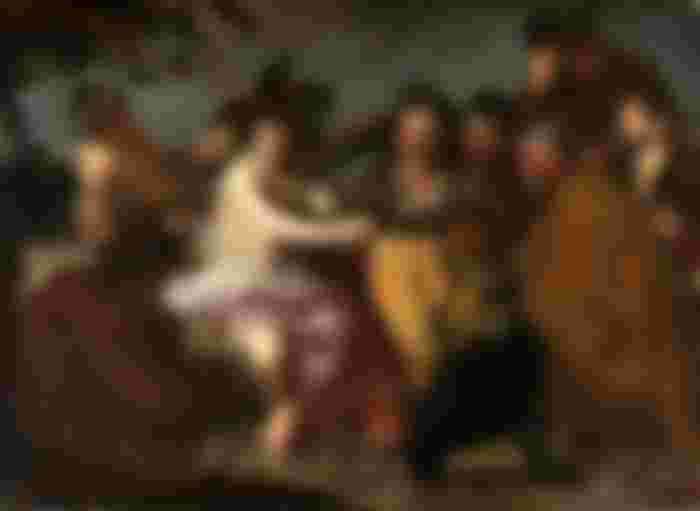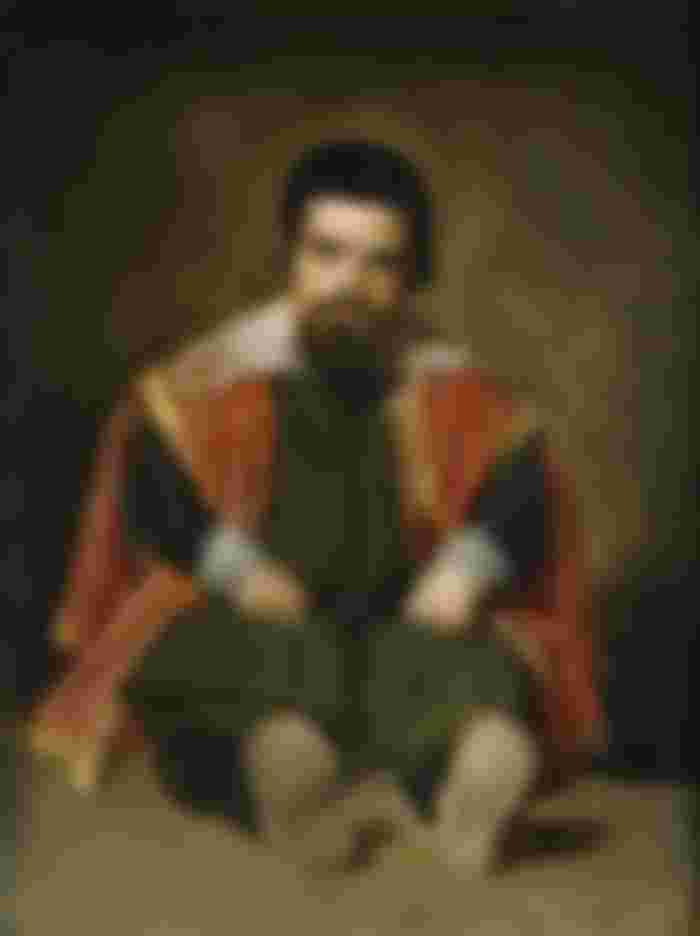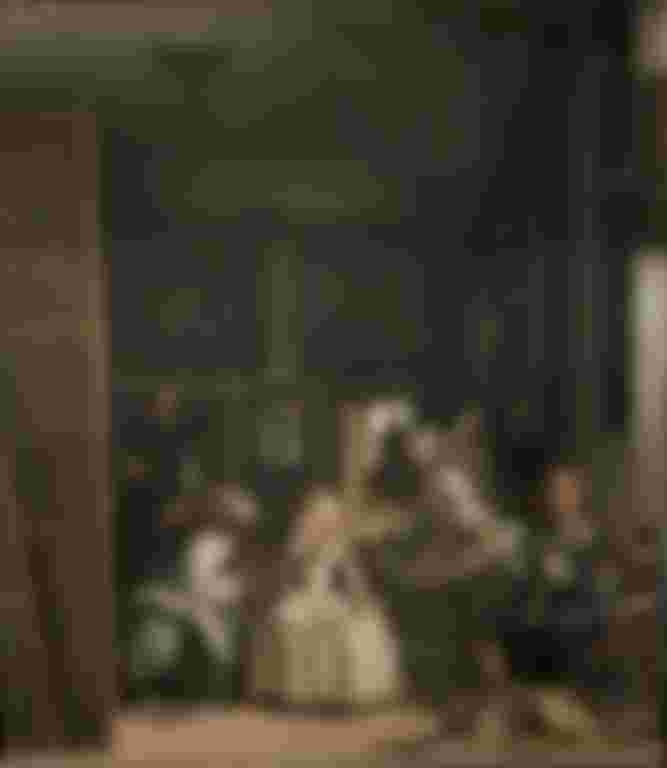One of the world's most important and magnificent painters, Diego Velazquez, was born in 1599 in the then rich and religious Spanish city of Seville.
Demonstrating a talent for painting from an early age, at the age of only 6, Velázquez went to the studio of the painter Pacek, a supporter of free Italian style and liberalism in painting. Unlike his mentor, Velázquez prefers objectivity versus idealizing reality.
This is also evident in some of his earliest works, such as The Immaculate Conception. In this part of the religious theme, the Mother of God is shown as a young girl, similar to any other you can meet on the street, which represents a kind of revolution in the previous painting of biblical themes.

It is believed that the figure of the Mother of God in this painting is modeled on Juan, Pacek's daughter, and Velasquez's wife.
Velasquez as a master of portraiture
Although at that time the depiction of real scenes and characters in painting was seen as a lack of the painter's creativity and imagination, Velazquez found his inspiration in everyday scenes from the life of ordinary people. It was in these works that his incredible talent for painting portraits came to the fore for the first time.
His virtuosity is not only reflected in his ability to conjure wrinkles on human skin, the play of light and shadow on the folds of the human body, or their photographically precisely captured movements, but also in his ability to express the character of painted characters through their portraits.

the portrait "Mother of Heronimo De La Fuente" (1620) represents a 66-year-old nun ready for the journey from Seville to the Philippines, where she will found the monastery of St. Clare. The energy of the painted nun comes out of the frame of the canvas and with her strong penetrating gaze and firm grip of the cross, almost as if it were a weapon, is transmitted to the observer of the painting.
This painting is also a proof of Caravaggio's influence on the young Velázquez, considering his mastery of the chiaroscuro-play of light and shadow technique, creating a sense of three-dimensionality, which is also the technique most widely used in Caravaggio's works.
In 1623, Velazquez was given the opportunity to paint a portrait of King Philip IV of Spain and on that occasion left Seville for Madrid. And although he brings a dose of idealization into this portrait, the painter does not shy away from faithfully presenting Philip's plump lips and his rounded chin, which are the two most noticeable features of all Habsburg relatives.

Velasquez portrays the young king as an imposing figure, with a slight dose of insecurity to which, according to sources, he was prone. The portrait is dominated by dark tones, the king himself is dressed in completely black clothes, which emphasizes his status and power. This portrait, the first in a series of royal portraits that Velázquez would later paint, earned him the title of royal court painter and the only painter for whom King Philip IV, better known as Philip the Great or King of the Planet, posed.
During Velazquez's stay in the palace, Paul Rubens came to the palace at the invitation of King Philip IV. Although it would be realistic to expect Velazquez to experience Rubens as a competition, the exact opposite happened. Apart from the fact that these two painters got along very well, Velázquez saw inspiration in Rubens, which resulted in the introduction of mythological motifs into Velázquez's works.
Mythological themes influenced by Rubens
Velazquez's first work to contain mythological motifs was Bacchus' Triumph ("Drunkards"), written in 1628 as a tribute to the God of wine in Roman mythology. In Baroque literature, Bach or Bacchus was considered an allegory of man's liberation from slavery to everyday life. And that is exactly the way Velasquez paints him, symbolically surrounded by ordinary people and workers, who find an escape from everyday life in wine.

A year later, in 1629, Velazquez went to Italy by order of King Philip, where he fell even more under the influence of the Italian style. "Apollo in Vulcan's Blacksmith" (1630) is a scene of Apollo telling Vulcan, the God of Fire and the protector of blacksmiths, about his wife's infidelity.

Elements of the Italian Renaissance are visible in the way Velazquez painted idealized male bodies, but the expressions on their faces, realistic interior and richness of details are a sign that Velazquez still remains consistent with his realism. Critics believe that such faithfully depicted feelings on the faces of the characters, as well as the tools found in the smithy, could not have been authentically painted if the painter had not seen them with his own eyes, so he is considered to have used props and live models.
"The Royal Madman, Don Sebastian De Mora" (1645), a portrait of an entertainer that represents a real contrast between the strength of the character of the painted character who exudes pride and the fact that he was hired as a court madman. Although his whole body can be seen in the picture, the entertainer does not sit on a chair or stand in a confident position, as was the custom when painting such portraits. No, he is sitting on the ground, symbolically at the mercy of the observer. However, this entertainer does not show any emotion, he shows his silent revolt motionless because he was treated as an object in the hands of a powerful man.

When painting such portraits, Velazquez gave himself a freedom he could not afford when painting the nobility, and thanks to these portraits, Velázquez presented himself not only as a painter of unattainable talent, but also as a connoisseur of human qualities, suffering and character.
Velasquez's path to the title of nobleman
Velazquez came from a poor family with a large number of children, and despite his very close relationship with King Philip IV, he failed to secure the title of nobleman. It is believed that with his portrait "Portrait of Juan de Pareja", which shows a slave with a noble demeanor, the painter alludes to his position. As another proof that the painter suffered that he was not accepted into higher society, the painting "Portrait of Pope Innocent X" is taken.

In this famous portrait made around 1650, the pope holds in his hand a paper signed by the painter's full name - Diego Rodriguez de Silva and Velazquez. It is this paper that represents Velazquez's request to the pope for approval of his joining the Spanish nobility. A goal to be achieved 9 years later.
This famous portrait is dominated by the color red, which symbolizes both the papal status and power, as well as a warning of his awkward character by which this pope was remembered. And although he sits relaxed in his richly decorated chair, his gaze is distrustful, and his attitude firm. The Pope, who was considered a man of extremely unattractive appearance and supernatural nature, first banned this portrait because it was too realistic, but later approved it and rewarded Velázquez with a luxurious gold chain.
Venus in front of the mirror
One of Velázquez's most famous masterpieces, "Venus in Front of a Mirror", was created between 1644 and 1648 and is now in the National Gallery in London. This image, shrouded in a veil of mystery, shows us the Goddess of Love, Venus, with her back to the observer, reflected in the mirror held by Cupid.
What is interesting is that the image of this Goddess can only be seen blurred in her reflection. Some critics believe that Velázquez wanted to say that ideal beauty is elusive and cannot be painted even by a bunch of virtuosos like him.

While some, on the other hand, notice that the reflection in the mirror looks much older than Venus' body and that the painter actually warns us about the transience of beauty.
The question also arises as to how this work, created during the Inquisition, was preserved when all images with representations of naked human bodies were either censored or destroyed. In 1914, Mary Richardson, a women's rights activist, made five larger slits in this painting because she did not like how "men stare at her in fascination all day." The painting was restored after this accident.
Las Meninas
Velasquez's last painting, which is still the subject of debate by many critics of the "Young Noblewoman" ("Las Meninas"), was painted in 1656.
This work depicts the young princess Margarita, the only survivor of the king's children, bathed in the attention of her maids. On the princess's right side, with a palette and a brush in her hands, positioned in front of the painting canvas, there is Velasquez himself, looking out of the picture, at the observer. On the wall behind the painter is a mirror in which the figures of King Philip IV and his second wife, Marianne of Austria, can be seen.

Since the picture hung in the king's bedroom, when he and the queen stood in front of the canvas, the picture would be complete. With this act, Velasquez sends the message that he has put his talent in the service of the king.
However, that is not all, by putting himself on the canvas next to the princess, the king and the queen, the painter points out his significance, the significance of a position for which he never received recognition. At that time, painting was still not considered an art sublime enough to match music and poetry. In this way, Velazquez not only alludes to the fact that he himself was not accepted into the nobility, despite his contribution to the court, but also elevates his profession and gives it importance without separating himself from his art.
The painting is currently in the National Museum in Madrid, and due to its significance, it is forever forbidden to take it out of the country.
Three years after the painting was completed, a red cross was painted on the painter's chest, a symbol of the Noble Order of Santiago in which he was admitted. Only a year after that, in 1660, the painter died, leaving behind a rich opus and legend about a painter who was able to penetrate into the depths of the human soul.
We can give all our thank to great painter such as Velazquez, and his painting was in video spot one of the famous song "Bandido":









Velazquez is the greatest Spanish painter and one of the greatest in the history of art. He learned more by observing and studying nature, than from his teachers and old masters. Like all his young contemporaries, he fell under the influence of Caravaggio, painting scenes from ordinary, everyday life. But even here it was obvious that he would be a great painter, who was completely his own.